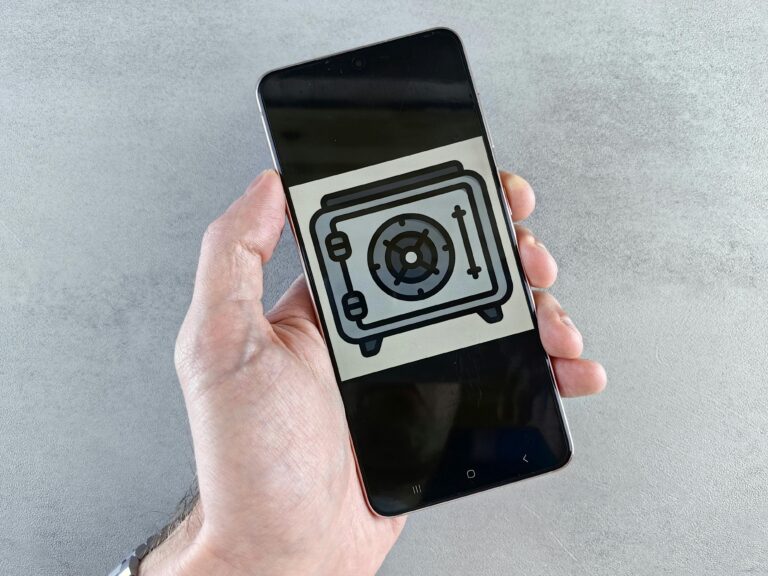The convenience of tapping your phone to pay for groceries, coffee, or even transit has revolutionized how we handle money. Mobile payments and digital wallets, powered by technologies like NFC (Near Field Communication) and QR codes, have become ubiquitous. But as our smartphones become our primary payment tools, a critical question emerges: Is your digital wallet watching your every financial move? Understanding the privacy risks associated with mobile payments is essential for safeguarding your financial data and maintaining your personal privacy in an increasingly cashless world.
While the security features built into services like Apple Pay, Google Pay, and Samsung Pay are robust, the collection of transactional data by various parties can have significant privacy implications. This guide will explore the potential privacy risks of mobile payments and, crucially, provide actionable safeguards to help you shop smart and stay private.
How Mobile Payments Work (And Who Sees Your Data)
When you use your phone for a mobile payment, several entities might be involved in the transaction and thus have access to some form of your data:
- Your Device: Your smartphone generates a unique, encrypted token for each transaction, rather than transmitting your actual card number.
- Payment Gateway/Processor: The technology that facilitates the secure transfer of funds between your bank and the merchant’s bank.
- Your Bank/Card Issuer: Your bank authorizes the transaction and has records of your purchases.
- The Merchant: The store or service provider you’re paying. They receive transaction details.
- Digital Wallet Provider (Apple, Google, Samsung): While they don’t typically see your specific purchase items (unless you use their loyalty programs or specific apps), they facilitate the payment process and have aggregate data.
- Loyalty Programs/Third-Party Apps: If linked to your digital wallet, these can gather granular purchase data for rewards and personalized offers.
Each of these points represents a potential nexus for data collection, which, when aggregated, can reveal patterns of spending, lifestyle choices, and even health habits.
Key Mobile Payment Privacy Risks to Be Aware Of
While the actual transaction itself is generally secure, the data generated around it can pose privacy challenges:
- Transactional Data Profiling: Every purchase, location, and time can be logged. This data, when combined with other information, can create a highly detailed profile of your spending habits, preferences, and daily routines.
- Targeted Advertising: Businesses and ad networks can use your purchase history (especially if linked via loyalty programs or specific apps) to deliver highly personalized, and sometimes intrusive, advertisements.
- Data Breaches at Merchants/Processors: Even if your digital wallet is secure, a data breach at a merchant or payment processor could expose your transaction history or linked personal information.
- Device Compromise: If your smartphone is lost, stolen, or compromised by malware, unauthorized access to your digital wallet, purchase history, and linked accounts becomes a significant risk.
- Location Tracking Integration: Many payment apps or underlying operating systems track your location during transactions, further linking your spending to your physical presence.
- “Incidental” Data Collection: Beyond direct purchases, some apps might collect data on what you browsed or placed in a cart, even if you didn’t complete the purchase via the mobile wallet.
Essential Safeguards: Protecting Your Financial Data & Privacy
Don’t abandon mobile payments entirely! With smart practices, you can enjoy the convenience while mitigating the risks. Implement these mobile payment privacy safeguards:
- Use Strong Device Security:
- Biometrics: Always use fingerprint, face ID, or a strong PIN/passcode to unlock your phone and authorize payments.
- Screen Lock: Set your screen to lock immediately.
- Antivirus/Security App: Keep a reputable mobile security app installed and updated (revisit our previous blog post on mobile malware!).
- Limit App Permissions:
- Location: For payment apps, set location permission to “While Using the App” or “Ask Next Time.” An app doesn’t need “Always” access to your location to process a payment.
- Microphone/Camera/Contacts: If a payment app asks for these unrelated permissions, be suspicious.
- Review Digital Wallet Settings:
- Transaction History: Some digital wallets allow you to limit or delete transaction history. Explore these options.
- Marketing & Personalization: Opt-out of any data sharing for marketing or personalized offers within your digital wallet’s settings.
- Be Selective with Loyalty Programs:
- Think twice before linking store loyalty cards directly to your digital wallet if you’re concerned about granular purchase tracking. Consider using separate loyalty apps or physical cards.
- Monitor Your Bank Statements: Regularly check your bank and credit card statements for any unauthorized transactions. This is your ultimate backstop.
- Avoid Public Wi-Fi for Sensitive Transactions: While mobile payment tokens are encrypted, the surrounding network can be vulnerable. Use your mobile data or a VPN when making payments on public Wi-Fi.
- Keep OS and Apps Updated: Ensure your smartphone’s operating system and all your payment apps are always updated to the latest versions. Updates often include critical security patches.
- Understand Merchant Data Practices: Be aware that the merchant itself collects data on your purchase. For sensitive purchases, consider cash if anonymity is paramount.
- Two-Factor Authentication (2FA): Enable 2FA on your banking apps and digital wallet accounts whenever possible.
The Future of Secure Transactions: Balancing Convenience and Control
The evolution of mobile payments is unstoppable, offering unparalleled convenience. As these technologies become more integrated into our lives, the responsibility for mobile payment privacy shifts partly to the user. By understanding the data flows, recognizing the risks, and diligently applying these safeguards, you can maintain a high degree of control over your financial footprint. It’s about making informed choices to ensure your digital wallet serves you, without revealing more than you intend.
Stay vigilant, stay secure, and keep your financial privacy intact!










